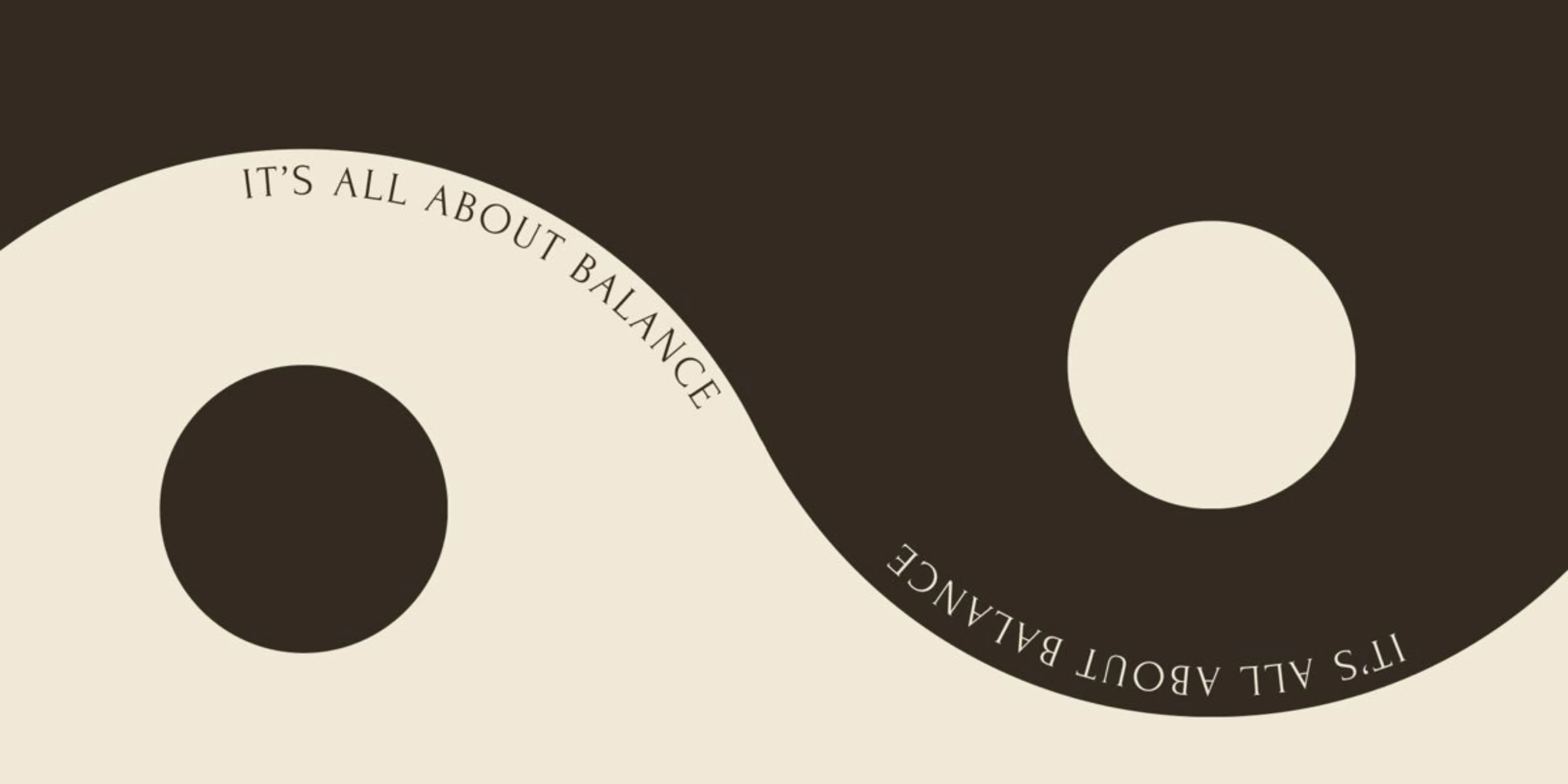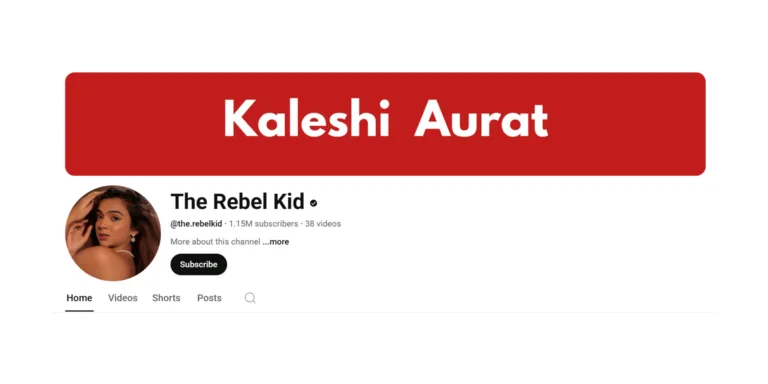Yin and Yang Meaning: The Ancient Balance That Shapes Our World

This Saturday morning, while casually scrolling through YouTube Shorts, I came across a short clip from Moment of Silence (MoS) an episode featuring Sakshi Shivdasani, Naina Bhan, and Sanjana Ganesan where the discussion subtly echoed the yin and yang meaning, reminding me how opposite energies often coexist in perfect balance.
Sanjana used the phrase “Yin and Yang”, and something about it made me pause. I had seen that iconic black and white symbol so many times but never really knew what it meant. So, like any curious gen z, I Googled it. What started as a casual scroll turned into a deep dive into the Yin and Yang meaning and wow, what a discovery!
I’ve always believed that opposites attract. But over time, I’ve also felt that sometimes those opposites become the biggest challenge in a relationship. You’re constantly not on the same page, and it’s exhausting. At the same time, I’ve also experienced how one person’s strength can beautifully balance another’s weakness.
This paradox? It’s exactly what Yin and Yang is all about.
Yin and Yang Meaning
The concept of Yin and Yang is one of the most profound ideas to come out of ancient Taoist philosophy. It describes how two opposing forces in the universe are actually interconnected and interdependent.
It’s not about conflict. It’s about balance the moon and the sun, feminine and masculine, night and day, stillness and movement. These opposites coexist and define each other.
This is the essence of the meaning of Yin Yang nothing exists in isolation, and balance is found when we embrace duality.
What is Yin?
Yin is the feminine, introspective, and passive force. It’s associated with:
- Darkness
- The moon
- Stillness
- Intuition
- Receptivity
- Rest
- Water
When you are in your Yin state, you’re probably in a reflective mood, craving solitude, or in need of emotional recharge. Think soft, subtle, slow that’s Yin.
What is Yang?
Yang is the masculine, active, and outward energy. It symbolizes:
- Light
- The sun
- Action
- Logic
- Movement
- Strength
- Fire
When you’re in Yang mode, you’re making decisions, taking risks, and moving fast. It’s bold, expressive, and driven.
Together, these energies create harmony not conflict. That’s the foundational yin and yang meaning.
The Yin Yang Symbol: A Visual of Life’s Balance
The Yin Yang symbol or Taijitu shows a circle split into black and white halves, each with a dot of the opposite color. It’s not just beautiful; it’s deeply meaningful.
- The black swirl is Yin, with a white dot inside.
- The white swirl is Yang, with a black dot inside.
This shows how each side contains a seed of the other even in light, there’s a bit of darkness, and vice versa.
This is why the meaning of Yin Yang goes far beyond just “opposites.” It’s a visual reminder that balance lies in embracing both sides.
Tao Yin Yang: The Energy of the Universe (Explained Simply)
In Taoist philosophy, the Tao (pronounced “Dao”) means the Way it’s like the natural flow of life. Yin and Yang are the two forces that keep this flow going. Everything in the universe including our emotions, actions, and health is made up of these two energies.
If they’re balanced, life feels smooth. But when one side takes over, we feel out of sync.
Example of Yin and Yang:
Imagine you’re always working, pushing, achieving always go go go. That’s very Yang energy (active, fast, intense). But if you never rest or take time to reflect (Yin), you eventually burn out or feel anxious.
On the flip side, if you’re always resting, staying in, and avoiding decisions (too much Yin), you might feel stuck or low in energy.
To stay balanced, Taoist practices like Tai Chi, Qi Gong, and Tao Yin yoga were developed. These are gentle movements and breathing exercises that help you:
- Slow down if you’re too Yang (stressed, overworked)
- Energize you if you’re too Yin (low, unmotivated)
They’re like mini tune-ups for your mind and body.
Read: Top 5 Stress-Relief Activities
“The Yin to My Yang” Meaning In Real Life
You’ve probably heard someone say: “He’s the yin to my yang.” So what does “the yin to my yang” meaning really imply?
It’s a way of saying that two people are opposites but they complement each other perfectly. One may be more emotional, and the other practical. One quiet, the other outspoken. But together? A perfect match.
Of course, as I mentioned earlier, sometimes being so different also creates tension. But that’s the point: the goal isn’t to become the same it’s to find balance.
Yang and Ying: Common Mix-Up
Many people say Yang and Ying instead of Yin and Yang. While the correct phrase is Yin and Yang, the flipped version is often used informally or in pop culture.
It still represents the same concept opposites, energy, duality so don’t worry if you hear it that way. Just know the roots are deeper than a catchy phrase.
How to Practice Yin and Yang in Daily Life
Here’s how you can apply this philosophy:
🌑 Yin Time:
- Slow walks
- Journaling
- Rest days
- Emotional check-ins
☀️ Yang Time:
- Morning workouts
- Brainstorming projects
- Making big decisions
- Expressing goals
By noticing when your body or mood swings toward Yin or Yang, you can adjust and come back to balance the real takeaway of Tao Yin Yang living.
How to Identify If You Are More Yin or Yang?
Ever wondered whether you lean more towards Yin or Yang energy in your daily life? While we all carry both energies within us, most people tend to naturally express one more than the other.
Here’s a quick way to find out:
You Might Be More Yin If…
- You enjoy solitude and quiet moments.
- You are empathetic and emotionally intuitive.
- You prefer slow, intentional movement (like yoga or walking).
- You are creative, introspective, and tend to overthink.
- You feel recharged after resting or being alone.
- You’re more passive in conflict and avoid confrontation.
You Might Be More Yang If…
- You’re energetic and action-driven.
- You love socializing, leading, and taking initiative.
- You think logically and focus on results.
- You thrive under pressure and enjoy challenges.
- You feel energized after movement or goal-setting.
- You’re outspoken and assertive in conversations.
Pro Tip:
You don’t have to fit perfectly into one box. Think of this as a spectrum, not a label. For example, you could be Yang at work and Yin in personal relationships. The goal isn’t to change who you are it’s to recognize which side you lean toward and how to find balance.
Final Thoughts
The more I learn about Yin and Yang, the more I realize how much of life is about understanding, accepting, and balancing opposites. Whether it’s your mood, your partner, your career choices, or even your Saturday scroll session there’s always a dance between light and dark, rest and hustle, stillness and speed.
So next time you hear someone say, “You’re the Yin to my Yang,” remember: it’s not just romantic. It’s cosmic.






